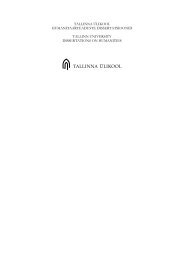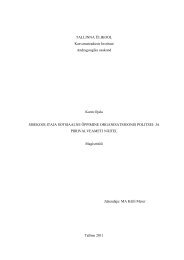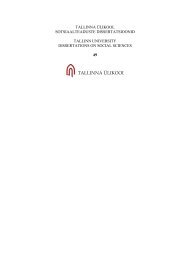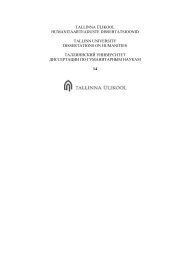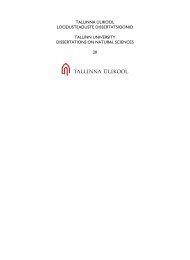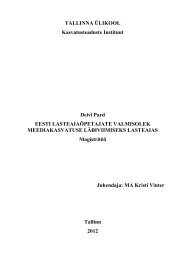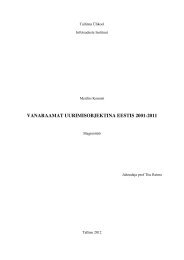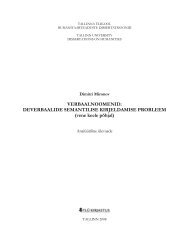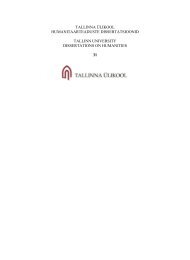Download (1157Kb) - E-Ait
Download (1157Kb) - E-Ait
Download (1157Kb) - E-Ait
You also want an ePaper? Increase the reach of your titles
YUMPU automatically turns print PDFs into web optimized ePapers that Google loves.
figures not necessarily reflect those who graduate rather only those enrolled at different<br />
levels. Recently academic libraries in Tanzania have set up a consortium (Consortium of<br />
Tanzania University Libraries (COTUL)) (Arkorful, 2007). This is a basis for partnerships<br />
and gives them bargaining power when purchasing software, journals and e-resources. They<br />
can build union catalogues to share resources and allow users to have access to larger<br />
collections. Limited information is found about COTUL; mostly it is just listed as existing in<br />
many articles. More information about the current figures relating to the number of<br />
university and enrolment see the ministry of Science, Technology and High Education<br />
website (MSTHE).<br />
1.3. Statement of the problem.<br />
According to Peter Drucker “The most valuable asset of a 20th century company was its<br />
production equipment. The most valuable asset of a 21st century institution will be its<br />
knowledge workers and their productivity” (Drucker, 1999). Libraries have been reluctant to<br />
create new measures in replacement for old measures such as number of books on the<br />
shelves, the number of loans and so on. Still there is a dilemma as to what will the future<br />
holds for libraries especially when most things are available online. There is a need for<br />
libraries to create and demonstrate more value to appeal to the stakeholders given the fact that<br />
more and more information providers exists. One way to achieve this is through promoting a<br />
well prepared and motivated task force through adequate training and development<br />
opportunities. Even with this era of very sophisticated technology the discoveries of<br />
machines which can think much the same way as a human being is still a dream. The human<br />
mind is the principal contraption that organizations need to generate new knowledge and<br />
innovation.<br />
1.4. The aim of the study.<br />
As stated above, this research focuses on intellectual capital. The aim of this research is to<br />
study how intellectual capital affects knowledge sharing, see 3.0 for the relationship between<br />
the two. Attention will be given to human capital and structural capital. It is the aim of this<br />
research to find out the state of intellectual capital in Tanzania public university libraries so<br />
as to propose ways forward through which libraries can use intellectual capital to promote<br />
knowledge sharing as a way to gain competitive advantage.<br />
4



